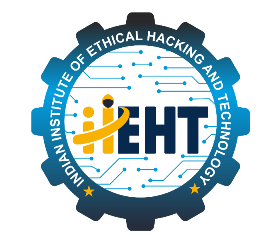What Is Cyber Security?
Date: Jan 19, 2023

Cyber Security
Introduction
Cyber Security is the process of preventing malicious attacks on internet-connected devices and infrastructure, including computers, servers, mobile devices, electronic systems, networks, and data. Security and cyber categories can be used to separate cybersecurity. "Cyber" technology is defined as technology that combines systems, networks, programmes, and data. Security also has a concern for protecting applications, networks, systems, and data. Other names for it include electronic information security and information technology security. Cybersecurity is the process of putting in place various degrees of security and defense against cyberattacks across computers, devices, systems, and networks. The standard structure and mechanism in place by organizations to handle attempted or successful cyberattacks. Threat detection and identification, network and system protection, and other activities can all be facilitated by an efficient framework.
Types of cybersecurity
• Network security
• Information security
• Application security
• Cloud security
• Planning for Business continuity and Disaster recovery
• Mobile security
1. Network security: In order to protect a computer network from misuse, illegal access, intrusion, attacks, and interruption, hardware and software must be put in place.
2. Information security: It entails putting in place a reliable data storage system to protect data integrity and privacy during both storage and transmission. Information security, often known as InfoSec, aids in preventing malicious activity involving sensitive data or information, such as unauthorized access, interruption, disclosure, abuse, modification, inspection, destruction, or recording.
3. Application security: Application security employs hardware and software to safeguard against potential vulnerabilities that may arise during an application's development phase. Examples of application security include firewalls, antivirus software, encryption, etc.
4. Cloud security: A cloud's data, infrastructure, and applications should be protected from cyberthreats and attacks using various technologies, services, controls, and policies. By continuously safeguarding and monitoring the data in the cloud, it helps to eliminate any risks that are related to on-premises threats.
5. Planning for Business continuity and Disaster recovery: The process of restarting operations following a disruptive occurrence is known as disaster recovery. On the other hand, business continuity planning makes sure that businesses can continue operating and profiting not only after minor delays but also in the event of larger disasters. The abbreviation BC/DR is frequently used to refer to the two terms because they share so many factors. All BC/DR plans have been laid out to aid staff in communicating and carrying out their duties in the event of an attack. Depending on the size, scope, and operations of the firm, a BC/DR plan's specifics may change. Furthermore, it is critical to realise that in this situation, the development of physical, HR, and IT planning cannot be done independently.
Relevance of Cybersecurity
Today, the network, computers, and other electronic devices, together with software programmes, are necessary for every aspect of our lives. The banking system, healthcare system, financial institutions, governments, and manufacturing sectors are just a few of the critical infrastructural sectors that rely on devices connected to the Internet. Some of their data, including intellectual property, financial information, and personal information, may be delicate and vulnerable to illegal access or exposure, which could have unfavorable effects. The ability to penetrate them for financial gain, extortion, political or social objectives, or even vandalism, is made possible by this information for hackers and malicious activity. The global economy could be put in jeopardy by further security breaches and the growing worldwide concern over cyberattacks that compromise systems. It is essential to create a solid cybersecurity plan in order to protect sensitive data from public security breaches. Furthermore, in order to secure their sensitive customer and employee data from cyberattacks, businesses and organizations—particularly those that deal with data pertaining to personal or public health, national security.
Objectives of cybersecurity
Data protection is the primary goal of cyber security. To secure the data from cyberattacks, the security sector offers a triangle of three connected principles. The CIA trio is the name of this concept. The CIA model was created to help organizations develop their information security infrastructure strategies. When any security flaws are discovered, one or more of these rules have been broken.
• Confidentially: Privacy that prevents unauthorized access to information is the same as confidentiality. Making sure the data is only accessible to those who are authorized to use it entails limiting access for unauthorized users. It stops important information from getting to the wrong individuals. An excellent example of ensuring confidentiality is data encryption.
• Integrity: The data is protected against unauthorized alteration by threat actors or unintentional user modification thanks to this principle, which guarantees its authenticity and accuracy. If any changes are made, precautions should be taken to safeguard the sensitive data against loss or corruption and quickly recover after such an incident. Additionally, it suggests verifying the reliability of the information source.
• Availability: This idea ensures that the material is constantly accessible to and helpful for its authorized users. It makes sure that system errors or cyberattacks do not obstruct these accesses.
Types of Cyber Security Threats
A malicious action to steal or corrupt data, obtain access to a network, or generally disturb digital life is considered a threat in cybersecurity. The following risks are ones that exist today according to the cybercommunity:
• Malware: Malware is brief for malicious software, and as its name implies, malwares are designed to damage computers and their users by stealing data, damaging files, or simply engaging in naughty behavior to annoy them. It has been suggested that malware is extensively disseminating and that computer security incidents have dramatically increased. Malware prevents networks from developing. The internet-based programmes that are the target of malware. The necessity to identify and disable malware as soon as possible has increased as more aspects of life rely on the internet to enhance their level of service and prevent the bad effects that these malwares can cause. In order to find these malwares, malware detectors are utilized, and antivirus scanners are one method of doing so. However, as malware creation skills advance, malware detectors use a variety of approaches to prevent the negative impacts of this software.
• Phishing: Phishing is a form of online fraud in which the sender pretends to be someone from a reliable company, such as PayPal, eBay, a financial institution, or colleagues and coworkers. They get in touch with a target or targets by phone, email, or text message and send them a link in an effort to convince them to click on it. They will be redirected by this link to fake websites where they will be asked to enter sensitive information such usernames, passwords, banking and credit card information, social security numbers, and other personal details. Additionally, clicking the link will install malware on the targeted devices that enables remote device control by hackers.
• Man-in-the-middle (MITM) attack: A cyberthreat known as a man-in-the-middle attack occurs when a cybercriminal intercepts a conversation or data transfer taking place between two people. Once the cybercriminal inserts themselves into a two-way conversation, they can obtain sensitive information and provide a variety of responses while appearing to be legitimate participants. Gaining access to our company's or our customers' data is the primary goal of this kind of attack. For instance, on an open Wi-Fi network, a cybercriminal could collect data travelling between the target device and the network.
• Distributed denial of service: Malicious hackers interrupt the usual traffic on targeted servers, services, or networks by sending Internet traffic to respond to legitimate requests for the target or its surrounding infrastructure. Here, multiple IP addresses are making requests, which could render the system unworkable, overwhelm its servers, cause them to briefly go offline or slow to a crawl, or stop an organization from performing its core duties.
• Domain name system: A DNS attack is a sort of cyberattack in which cybercriminals employ DNS hijacking to lead consumers to malicious websites and steal data from compromised devices. As a crucial component of the internet's infrastructure, the DNS system poses a serious cybersecurity risk.
Challenges of Cyber Security
Due to the constantly changing nature of threats, the largest problem businesses have in cyber security is the implementation of efficient cybersecurity solutions. In today's society, it seems as though there are more technologies than humans, and attackers are getting smarter and smarter. The security measures used by businesses and the government to protect only the most vital system components have proven ineffective in the face of more sophisticated and developed threats. As a result, enterprises must adopt more dynamic and flexible approaches to cyber security. The National Institute of Standards and Technology (NIST) suggests changing the conventional method and moving toward continuous monitoring and real-time evaluations, making security more data-oriented.
Recommendations for Cybersecurity
• Conduct cybersecurity training and awareness: A successful cybersecurity policy requires that every corporation train its employees on cybersecurity, corporate regulations, and incident reporting. The strongest technical security measures may be breached by staff members who engage in negligent or malicious behaviour, costing money. As a result, it is beneficial to provide workers with security training and knowledge through seminars, lectures, and online courses in order to decrease security violations.
• Use anti-virus software: Using antivirus software to identify and get rid of undesirable risks from your device is also essential. To receive the best level of protection, this programme is constantly updated.
• Perform periodic security reviews: Every firm makes sure that all software and networks undergo recurring security audits in order to detect security problems as soon as possible in a safe setting. Red team evaluations, source code reviews, architecture design reviews, and application and network penetration testing are a few well-known examples of security reviews. Additionally, if security vulnerabilities are determined, businesses should prioritize and take immediate action to mitigate them.
Conclusion
The best Défense against cyber-attacks is a combination of effective cyber security measures and well-informed, educated users. Starting small and concentrating on the most important assets is always an option. As the Cyber Security programme develops, scaling the efforts is then possible. The only way to combat malicious threats and attacks is to allow security software to develop so that it can combat the most recent and emerging dangers head-on or, at the very least, stop them from succeeding in the first place. Due to the widespread use of the internet nowadays, cybersecurity is one of the most important needs worldwide because cybersecurity attacks pose a serious threat to the security of the nation. To ensure that your system and network security settings remain malware- and virus-free, both the government and citizens should educate people about the importance of regularly updating your system and network security settings.



